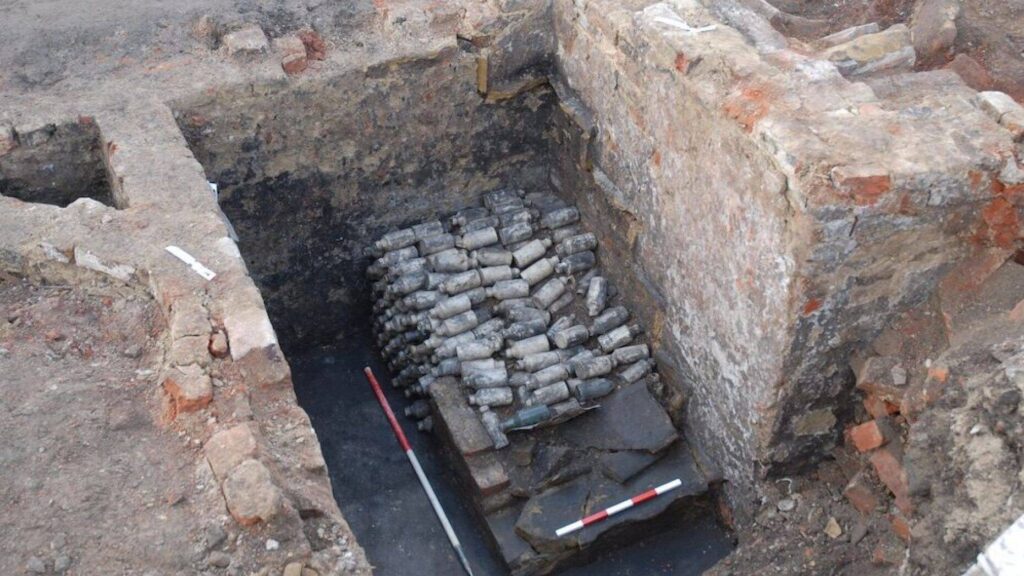19th-century beer bottles found under the staircase in England
WYAS Archeological Services made the finding back in February and subsequently sent out the bottles for analysis.
The team discovered a set of cellar stairs in the ruins of what was the Scarborough Castle Inn after investigating an area within the site of the former Tetley’s Brewery.
Neatly piled on the stairs was a collection of over 600 bottles, initially thought to contain ginger beer.
But it was discovered that the bottles were filled with alcohol and, even more, high concentrations of lead after the samples were sent for review by West Yorkshire Joint Services.
In a social media post, archaeological services WYAS said that the bottles contained 5.07 pH beer with 3% ABV alcohol. However, the liquid contained 0.13mg/l of lead, far above the WHO-recommended safe level in water of around 0.01mg/l.

The team said they suspect the high metal content would have come from lead pipes, and that the beer “would have been detrimental to health”.
The bottles themselves hail from a number of different breweries, with the most from ‘J. E. Richardson of Leeds’. The archaeologists hope to complete their work in the area in the next two weeks, after which they will compile a report of their findings.
Speaking to the drinks business, senior project manager at Archaeological Services WYAS, David Williams, said that the team thought the bottles dated to the later 19th century, “perhaps the 1880s”.
He added that the developer, Vastint, intends to keep the bottles and make a feature of them within the new development of the former Tetley’s Brewery.
“This excavation is giving us a great opportunity to uncover a part of Georgian and Victorian Leeds. The results so far are giving a real insight into the daily lives of the former residents of Leeds during this period,” he said.





